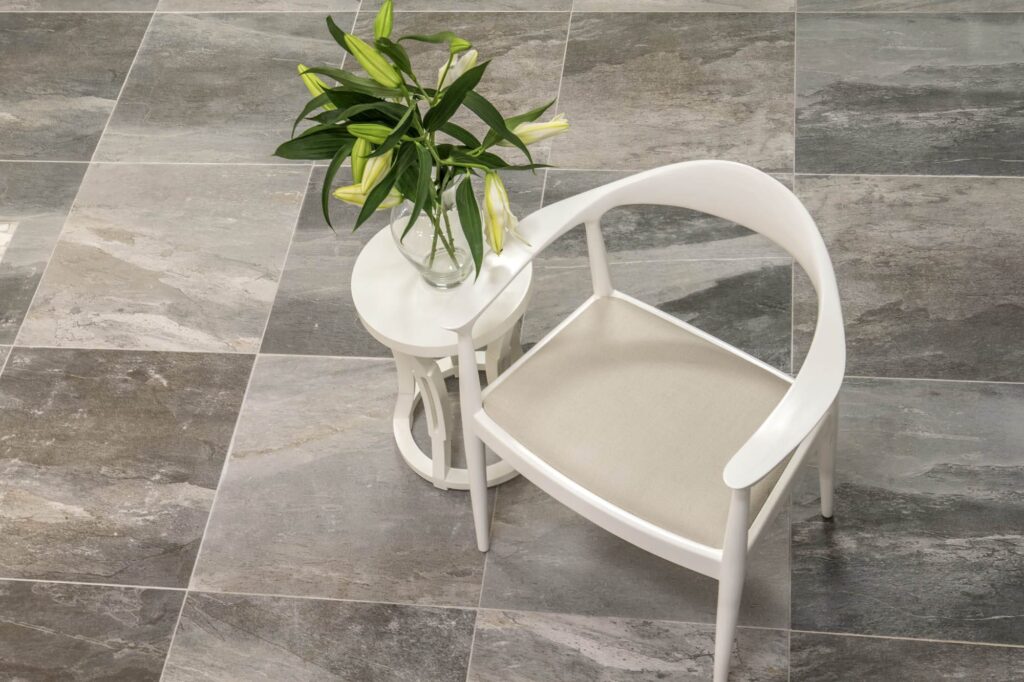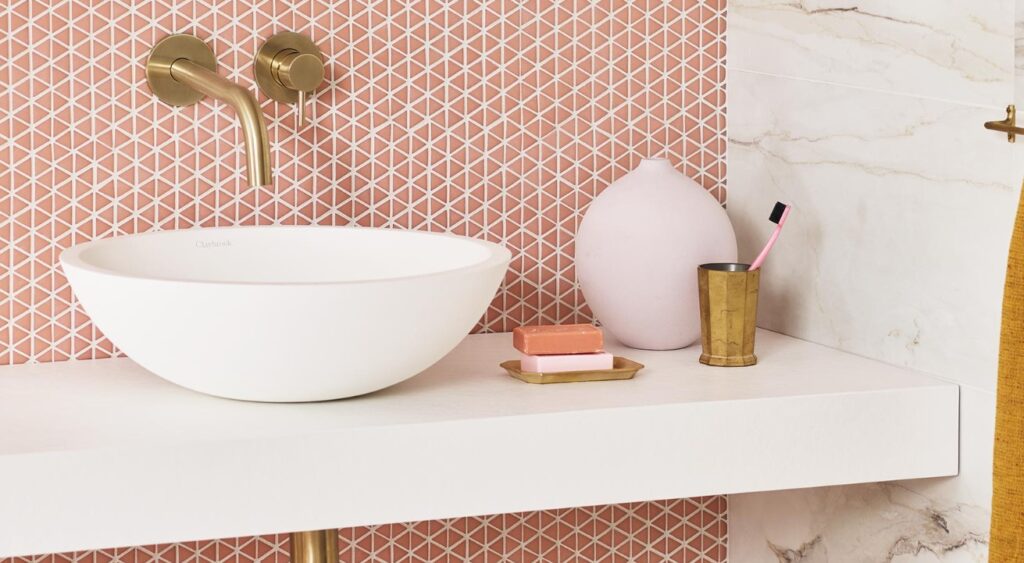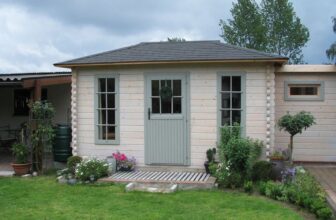
When deciding between reclaimed and new tiles for a construction or renovation project, it is crucial to understand the respective advantages and disadvantages each option presents.
The right choice hinges on the project’s requirements, budget constraints, and environmental considerations, balancing historical charm against modern performance.
Table of Contents
The Benefits of Reclaimed Tiles
Reclaimed tiles offer a unique set of benefits that make them an attractive choice for various building projects, particularly those aimed at preserving historical integrity or achieving a specific aesthetic that new ones cannot replicate.
Historical Aesthetic and Authenticity
One of the most compelling aspects of reclaimed is their inherent historical value. Each tile carries a story, often salvaged from buildings that may have significant architectural or cultural importance.
This history imbues a project with an irreplaceable authenticity, making reclaimed especially suitable for the restoration of heritage buildings or for creating spaces with a period-specific character.
Their unique patinas, irregularities, and aged appearances can dramatically enhance the authenticity and atmosphere of a space, qualities that are highly valued in historic preservation and by those who seek a connection to the past.
Environmental Sustainability

Source: canariashorizontedesalud.itop.es
From an ecological perspective, using reclaimed tiles significantly reduces the environmental impact associated with new construction materials. Unlike new production, which requires the extraction of raw materials and substantial energy expenditure during manufacturing, reclaimed tiles make use of existing resources.
This process cuts down on the energy consumption and carbon emissions that are typical of tile manufacturing, supporting sustainable construction practices. By choosing reclaimed tiles, developers and homeowners can contribute to waste reduction and resource conservation, appealing to an increasingly eco-conscious public.
Proven Durability and Longevity
Reclaimed are not just aesthetically pleasing but also demonstrate remarkable durability. These have been tested over time, often coming from buildings that have stood for decades or even centuries.
Their ability to withstand the elements and remain functional after years of service speaks to their robustness and longevity. This proven durability can be a significant advantage, as it indicates that the tiles will likely continue to perform well for many more years, reducing the need for replacements and maintenance.
Cost-Effectiveness
Financially, reclaimed can offer considerable savings. They are often available at a lower cost than new ones because they are essentially recycled materials. This cost advantage can make a substantial difference in the overall budget of a project.
The unique character and aesthetic of reclaimed tiles can add value to a property without the need for expensive, custom-designed new materials. The blend of lower initial costs and potential for increased property value makes reclaimed tiles an economically wise choice for both private and commercial projects.
What are the Benefits of New Tiles?

Source: tileshop.com
New tiles offer reliability and conformity to current building standards that reclaimed tiles might lack.
Reliability and Compliance with Standards
New tiles are engineered to conform to the latest building regulations and performance standards.
This is crucial in ensuring that all aspects of construction meet safety requirements and functionality expectations, particularly in new constructions and comprehensive renovations.
Modern tiles are subjected to rigorous testing processes to ensure they withstand various stresses, such as moisture, heat, and heavy foot traffic. This testing guarantees that the tiles will perform as expected over their intended lifespan, providing peace of mind for developers and homeowners alike.
Availability and Aesthetic Uniformity
One of the significant advantages of new tiles is their consistent quality and appearance. Manufacturers produce tiles in large batches that maintain uniform color, size, and texture.
This consistency is especially beneficial in projects that cover large areas or where a seamless aesthetic from room to room is desired.
The ability to source large quantities of identical tiles simplifies the design and installation process, reducing the time and effort needed to match pieces, as often required when using reclaimed tiles.
Reduced Risk of Contaminants
New tiles are manufactured in controlled environments that ensure they are free from molds, fungi, and other contaminants that might be found in reclaimed materials.
This factor is critical for maintaining indoor air quality and ensuring the health and safety of building occupants.
New tiles are less likely to have structural flaws that could lead to breakage or other failures, making them a safer choice for areas with significant use or load.
What Should You Consider Before Choosing?

Source: housing.com
Choosing between reclaimed and new tiles requires thoughtful consideration of several key aspects to ensure that the selection aligns perfectly with the project’s needs, constraints, and values. Here’s a more detailed exploration of the factors to consider:
Project Requirements
The specific needs of your project will largely dictate the type of tile that is most appropriate. If the project aims to preserve historical integrity or to reflect a certain period’s aesthetic, reclaimed tiles are invaluable.
Their unique character and weathered appearance offer an authenticity that new ones simply cannot match, making them particularly suitable for renovations of heritage buildings or in contexts where historical accuracy is desired.
On the other hand, for new constructions or projects where uniformity, modern design, and compliance with the latest safety and performance standards are essential, new tiles are the preferable choice.
Their consistent quality ensures that they meet strict building codes and fit seamlessly into contemporary architectural designs.
Budget Constraints
Financial considerations are critical in the decision-making process. Reclaimed ones might seem like a cost-effective option upfront, particularly if sourced locally or if they are in abundant supply.
They can also entail hidden costs. The need for additional treatment to restore their condition, coupled with potential challenges in installation due to irregular sizes and shapes, can increase labor costs and extend project timelines.
Conversely, new tiles, while potentially more expensive initially, offer more predictability in terms of budgeting. Their standard sizes and less complex installation requirements can simplify the construction process, potentially saving on labor and reducing overall project costs.
Environmental Impact

Source: claybrookstudio.co.uk
The environmental impact of choosing between reclaimed and new variants cannot be overstated. Opting for reclaimed contributes positively to sustainability goals by reducing waste and the demand for new raw materials.
It minimizes the energy consumption typically associated with the manufacturing of new tiles, which includes the extraction, processing, and transportation of raw materials. This choice supports a circular economy, extending the lifecycle of existing materials. However, it’s important to recognize that many manufacturers of new tiles have also adapted to more sustainable practices.
Modern tiles may be produced with recycled materials and employ manufacturing processes designed to minimize environmental impact. These advancements help reduce the ecological footprint of new ones, making them a viable option for environmentally conscious projects.
The Bottom Line
The choice between them should be guided by the project’s specific needs, budgetary limitations, and environmental priorities.
For heritage projects or those where cost and sustainability are paramount, reclaimed tiles shine.
Meanwhile, new ones offer unmatched reliability and standardization, ideal for modern constructions. The final selection should align with the homeowner’s or developer’s overarching objectives and values.







